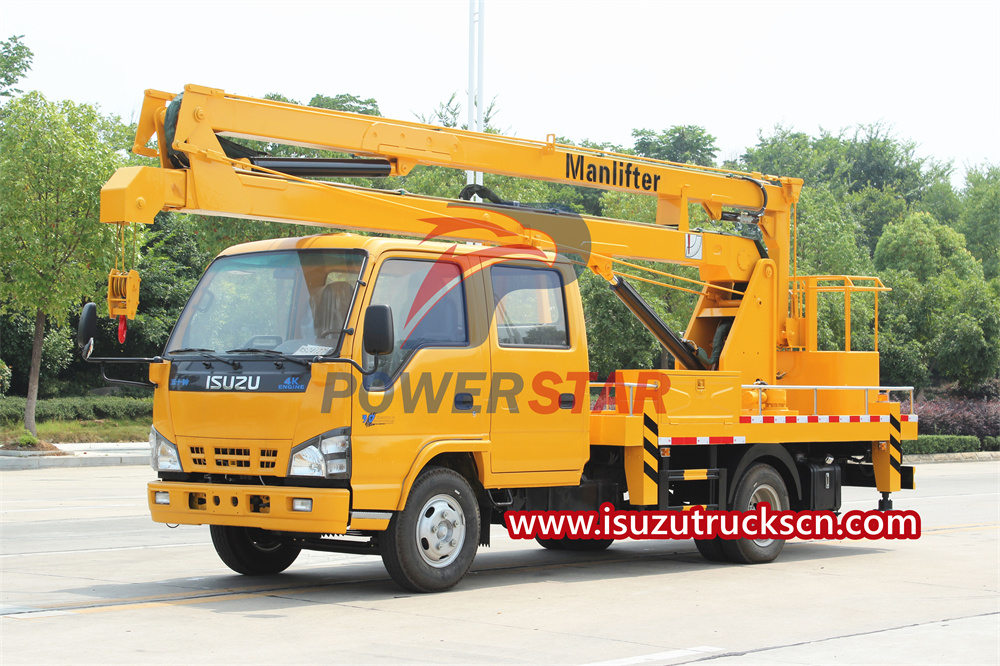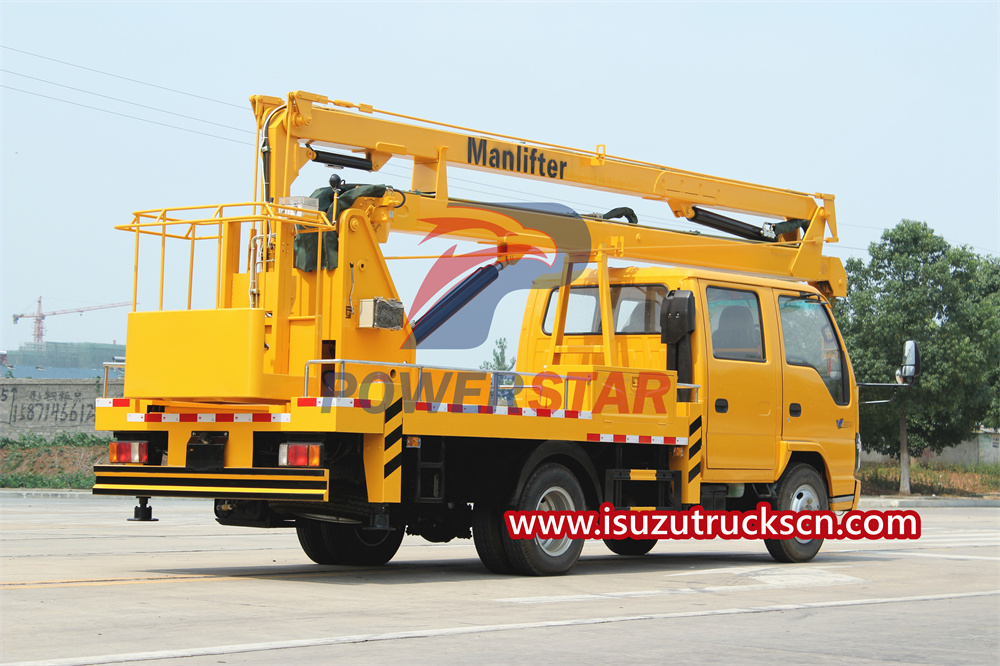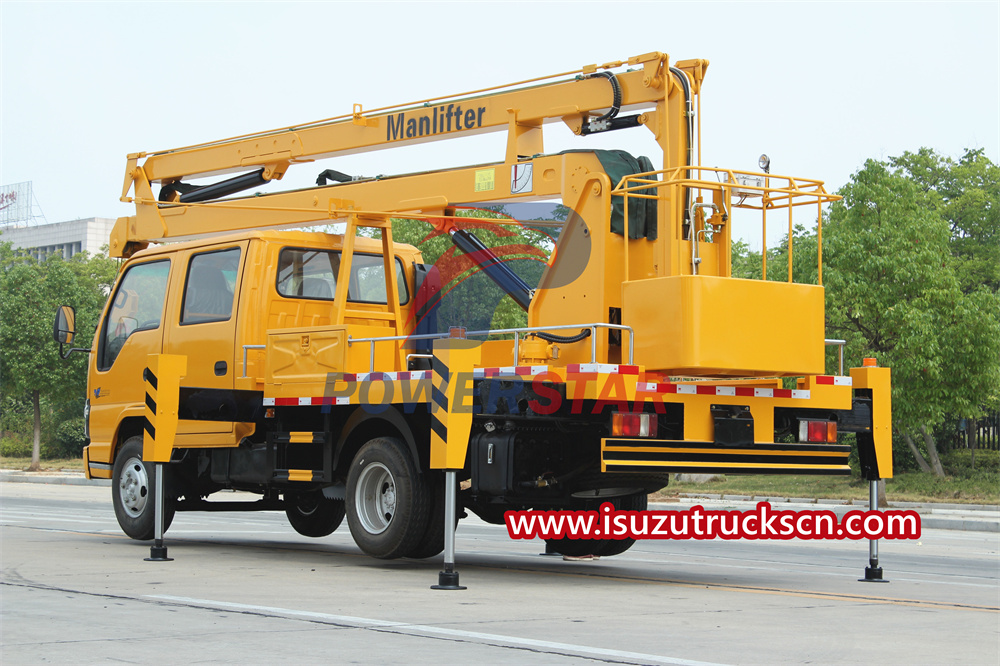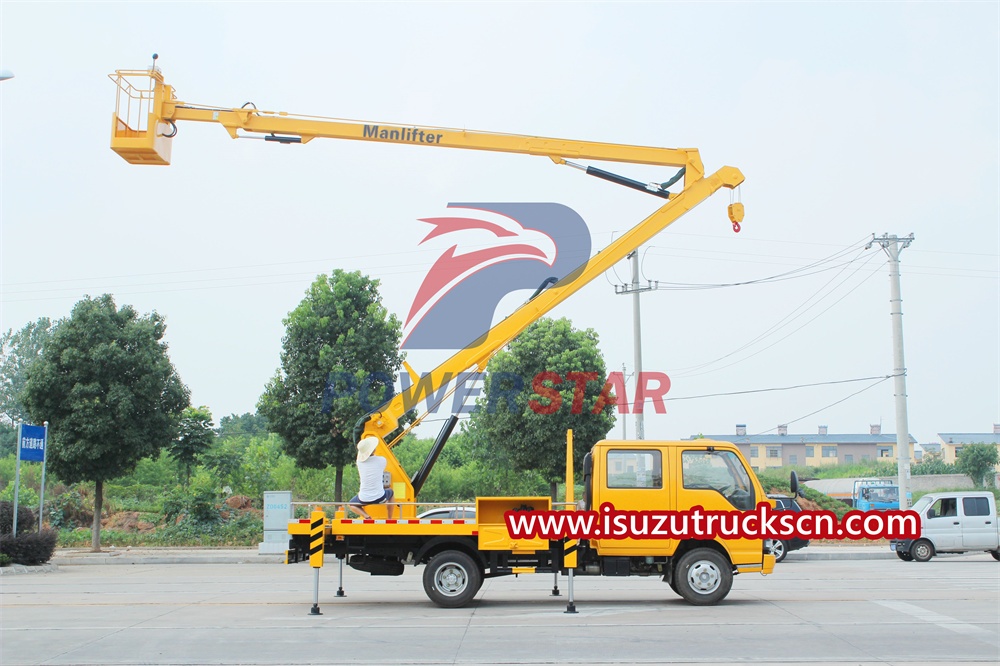


The engine is the heart of the isuzu vehicle, and its normal operation directly affects the performance and service life of the vehicle. For special-purpose vehicles such as Isuzu aerial work vehicles, engine maintenance is even more important. Regular maintenance of the engine can ensure its stable and efficient working condition. Isuzu aerial work vehicles need to operate in various complex environments, such as harsh weather conditions and high temperature environments. Only with professional care and maintenance can the engine maintain normal cooling and lubrication system operation, thereby ensuring that the vehicle can operate efficiently under extreme conditions. Secondly, regular maintenance of the engine can extend its service life. Isuzu aerial work vehicles often need to run and stop frequently, which puts higher demands on the engine. By checking and replacing worn parts and cleaning carbon deposits inside the engine, the failure rate of the engine can be reduced, the service life of the engine can be extended, and the reliability and stability of Isuzu trucks can be improved.
1. Replacement of engine oil and filter: After the Isuzu aerial work vehicle has traveled a long distance, change the engine oil while the oil is still hot and thin. Drain the oil from the engine and oil filter housing, remove the central bolt of the filter housing, take out the filter element and filter housing, drain the stored oil and clean it with gasoline. Every time you change the oil, replace the filter element and the gasket between the filter housing and cover. Check all sealing rings for accurate sealing and damage, and replace them if necessary. Clean the earphone drain plug. The filter spring must be aligned with the filter housing. Place the filter housing vertically against the cold filter bracket and push it upward. Then, tighten the center bolt by hand or with a wrench.
2. Maintenance of dust separation valve: Empty the dust separation valve in the air intake line regularly. In case of dust accumulation I remove it once a week. The dust is very serious and must be removed every day. To empty, compress the rubber bellows. The correct installation of the oil seal is very important. Pay attention to installing the oil filter housing according to the specified torque. Screw in and tighten the oil drain plug. Observe the tightening torque.Pour engine oil into the engine. Crank the engine (no more than 20 seconds) until the oil pressure gauge indicates the oil pressure. At this time, apply the exhaust brake to prevent the engine from starting.
Note: If the compressed air system does not supply pressure, flip the cab forward, move the fuel injection pump control lever to the stop position, and push the starter button on the engine. Let the engine idle for a while and check whether the oil filter is leaking. After five minutes, turn off the engine, check the engine oil level, and refill the oil to the mark on the oil dipstick.

3. Inspection and maintenance of paper air filters: After the engine is warmed up, open the accelerator fully (press the accelerator pedal fully) and observe the maintenance indicator. If all the colored areas are visible, clean or replace the filter element. If all red areas of the maintenance indicator are visible, clean or replace the filter element.
Isuzu aerial work vehicle accessories with two steering front axles and large cab:
a. If the red area of the maintenance indicator is fully visible, push the button to remove the red area.
b. Start the engine at full speed (press the accelerator pedal fully) and observe the maintenance indicator. If a red area appears, clean or replace the filter element.
c. Push the button to clear the red area.
Cleaning:
a.Loosen the fixing nut and take out the filter element.
b.Cover the inside of the filter element and blow with a maximum of 5 bar compressed air in the folding direction of the filter element. Then, pay attention to blowing inside the filter element. This cleaning is not thorough enough, you can also use detergent to clean the filter element. If cleaning, strictly follow the following safety rules.
c.Use the manufacturer’s cleaning agent. Any Mercedes-Benz workshop will provide one, and if the manufacturer's cleaner is not available, a non-foaming alternative cleaner can be used.
Note:The manufacturer's filter cleaner has a strong degreasing effect. When using it, wear a rubber cover or apply skin protection ointment to protect your hands. About do not use lye or hot liquids.
d.Soak the filter element in the cleaning solution at about 40°C for 10 minutes. Then wash your ears in the cleaning solution for five minutes, rinse with clean water, shake off the water on the filter, and then put it in a dust room to dry (about 60°C). Install only if thoroughly dry.
e.Clean the filter gasket and filter housing cover.
f.Before installing the filter element, use an inspection light to check whether the cleaned filter element and gasket are damaged (cracks, pinholes). Replace damaged filter element.
g.Pay attention to the number of cleaning times marked on the surface of the filter element, install the filter element and tighten the fixing nut.
The filter element should be replaced after three cleanings, or at most two years. Dust deposited in the air intake duct indicates that there is a leak in the air intake system, which should be eliminated immediately.

4. Maintenance of oil bath air filter: Check the air filter's oil level regularly. If there is a lot of dust entering the air filter, check it once a week. If there is a lot of dust, check it every day. Always keep the oil level up to the mark and at least 5 mm above the sludge layer forming at the bottom of the oil shell.If there is increased dirt on the air filter, replace the engine oil. The entry of unclean air will cause accelerated piston and cylinder wear.Clean the air filter element and filter housing with diesel fuel and blow dry with compressed air (dry thoroughly). Pour engine oil into the filter housing until it reaches the upper mark.When assembling the air filter, check its sealing condition and replace it if necessary. Dust deposited in the air intake duct indicates that there is a leak in the air intake system, which should be eliminated immediately.

5. Lubrication of flywheel ring gear:
Lubricate the flywheel ring gear regularly. Use long-lasting grease to lubricate the ring gear lubrication points one by one through the inspection holes.
6. Timing gear drives power wheel output shaft:
Follow the instructions in the maintenance manual to check the elastic coupling rubber block for cracks and damage. Are the fixing bolts tight? Observe the torque. For information on replacing the rubber block, see "Fault Determination".
7. Removal and installation of cylinder head cover:
Before removing the cylinder head cover, remove any dust from it. Replace severely deformed or damaged cylinder head gaskets and spring washers under the tightening bolts. Observe the tightening torque.

8. Valve clearance adjustment:
Use a thickness gauge to check the gap between the rocker arm and the intake and exhaust valve stems when the engine is cold (check 20 minutes after the engine is turned off). At the top dead center of ignition, the intake and exhaust valves are closed at the same time, and the first cylinder valve clearance (intake and exhaust valve clearance) is adjusted.
Overlap check: When the intake and exhaust are slightly opened (overlap) at the same time, the cylinder piston should be burned.Loosen the countersunk nut and turn the adjustment screw to adjust the valve clearance. After adjustment, retighten the countersunk nut and check the valve clearance again. Use special work to rotate the crankshaft. For valve clearance, please refer to "Technical Data".




